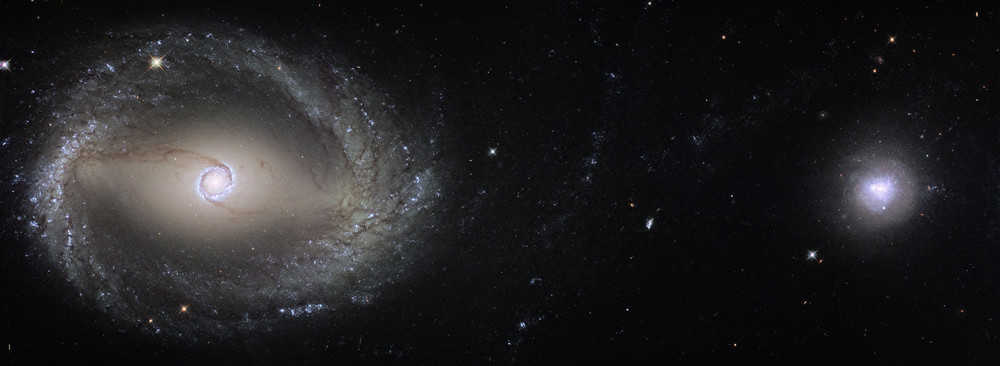The Cosmos with NGC 1512/1510
This composite image, created out of two different pointings from Hubble, shows the barred spiral galaxy NGC 1512 (left) and the dwarf galaxy NGC 1510 (right). Both galaxies are about 30 million light-years away from Earth and currently in the process of merging. At the end of this process NGC 1512 will have cannibalised its smaller companion.
This newly released Hubble image shows the tiny galaxy NGC 1510 and its colossal neighbor NGC 1512 at the beginning of their lengthy merger.
The gravitational dance between two galaxies in our local neighborhood has led to intriguing visual features in both as witnessed in this new NASA/ESA Hubble Space Telescope image. The tiny NGC 1510 and its colossal neighbor NGC 1512 are at the beginning of a lengthy merger, a crucial process in galaxy evolution. Despite its diminutive size, NGC 1510 has had a significant effect on NGC 1512’s structure and amount of star formation.
Galaxies come in a range of shapes and sizes, and astronomers use this fact to classify them based on their appearance. NGC 1512, the large galaxy to the left in this image, is classified as a barred spiral, named after the bar composed of stars, gas and dust slicing through its centre. The tiny NGC 1510 to the right, on the other hand, is a dwarf galaxy. Despite their very different sizes, each galaxy affects the other through gravity, causing slow changes in their appearances.
